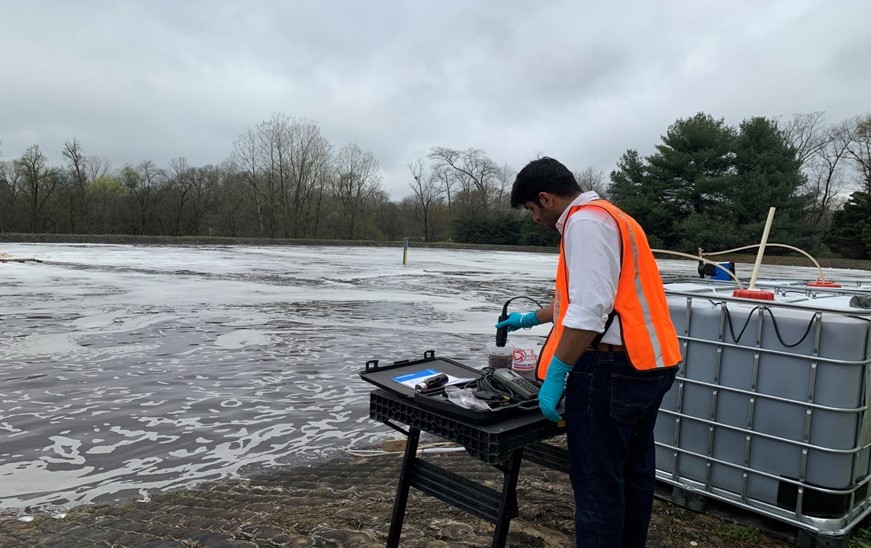Since the 1970s, biotechnology has garnered attention and proved capable of solving challenges in different sectors like food production, agriculture, and environmental protection. In recent years, however, the adoption of biotechnology in wastewater treatment has emerged as a game-changer across various industries. Traditional methods of wastewater treatment often fall short in efficiently addressing the diverse and complex pollutants present in industrial effluents. However, biotechnology offers a promising solution by leveraging the power of living organisms and biological processes to degrade contaminants effectively.
To set up sustainable systems for handling and treating urban environmental challenges, Biotech solutions need to be rendered and integrated at a large scale — claims Himanshu Lamba, a Biotech Engineer and a leading specialist in environmental technology and sustainability.
One of the key advantages of employing biotechnology in wastewater treatment is its versatility. Bioremediation, a process where microorganisms degrade organic pollutants into harmless byproducts, is widely utilized in industries such as pharmaceuticals, textiles, and food processing. One of Lamba’s most notable projects, as he shared, is the largest lake bioremediation project in India, where he played a crucial role in designing bioaugmentation strategies, developing protocols, and creating a comprehensive monitoring plan. Working closely with their channel partner in India, knowledge and experience were leveraged to address the unique challenges of the project and ensure its success in restoring the health of the lake ecosystem.
“Bioremediation processes produce fewer harmful byproducts, minimizing the environmental impact of wastewater treatment operations.” Himanshu highlighted.
Biotechnology-based treatment methods are often more sustainable and environmentally friendly compared to traditional approaches. Bioreactors, for instance, utilize microbial activity to break down pollutants, resulting in lower energy consumption and reduced reliance on chemical additives.
Another upside — the application of biotechnology in wastewater treatment is not limited to specific industries but spans across a wide spectrum. In the agricultural sector, for example, bioremediation techniques are employed to mitigate the pollution caused by agrochemical runoff and livestock waste.
“One of the key developments I’m proud of…”, shared Lamba, “is assisting several industries across the globe in meeting environmental compliance standards for their wastewater discharge.” Transcending industries with the impact of biotech solutions was made possible through his hands-on approach, where he provided on-the-ground training and guidance to channel partners and distributors in the countries of India, Malaysia, Indonesia, UAE, and the USA. By frequently visiting these countries, the seasoned environmentalist was able to deliver presentations to potential stakeholders and educate them about the importance of implementing biological solutions “tailored to their specific applications or challenges.”
Lamba has worked on developing strategies for bioaugmentation in different types of wastewater applications and has been instrumental in developing application methodologies for applying biological solutions to different wastewater applications like industrial and sewage wastewater treatment plants, surface water seen in the likes of lakes, ponds, grease traps, and landfill leachate. He shares that he works with various partners globally, and from 2016-2021, the expert has trained partners in the aforementioned countries.
Quite notably, Bioaugmentation strategies designed by Himanshu Lamba have had a tangible impact on wastewater treatment operations, leading to a remarkable 20-30% increase in overall plant treatment efficiency. Enhancements of this magnitude not only help industries meet regulatory standards but also contribute to the bigger picture of environmental sustainability.
Lamba, in his 2020 paper “Optimizing Bioaugmentation Strategies for Industrial Wastewater Treatment,” especially focuses on the application of bioaugmentation technology while delving into the impact of factors influencing bioaugmentation on the biological treatment of wastewater, and suggests potential solutions.
Himanshu has assisted over 100 environmental sites in achieving discharge compliance and/or improving the efficiency of their existing treatment systems. These sites encompass a diverse range of environmental settings, including sewage or industrial wastewater treatment plants, surface water bodies like lakes or ponds, commercial restaurants, and solid waste management sites. By leveraging his expertise and collaborating with channel partners, he has been able to implement effective biotechnological solutions tailored to the unique needs of each site.
The quantifiable impact of these efforts is reflected in the improved compliance with discharge regulations and, rather naturally, the enhanced efficiency of treatment systems. For instance, we’ve seen a significant reduction in pollutant levels in discharged water, an increase in treatment capacity, and overall improvements in environmental performance metrics as well.
These measurable outcomes demonstrate the tangible benefits of implementing biotechnological solutions in environmental applications, thereby underscoring the effectiveness of this approach to addressing environmental challenges and promoting sustainability. In conclusion, the employment of biotechnology in wastewater treatment represents a paradigm shift in industrial environmental management with leaders like Himanshu Lamba pursuing versatility, sustainability, and potential for innovation in the domain.
